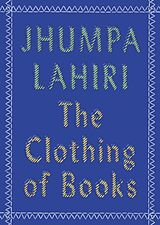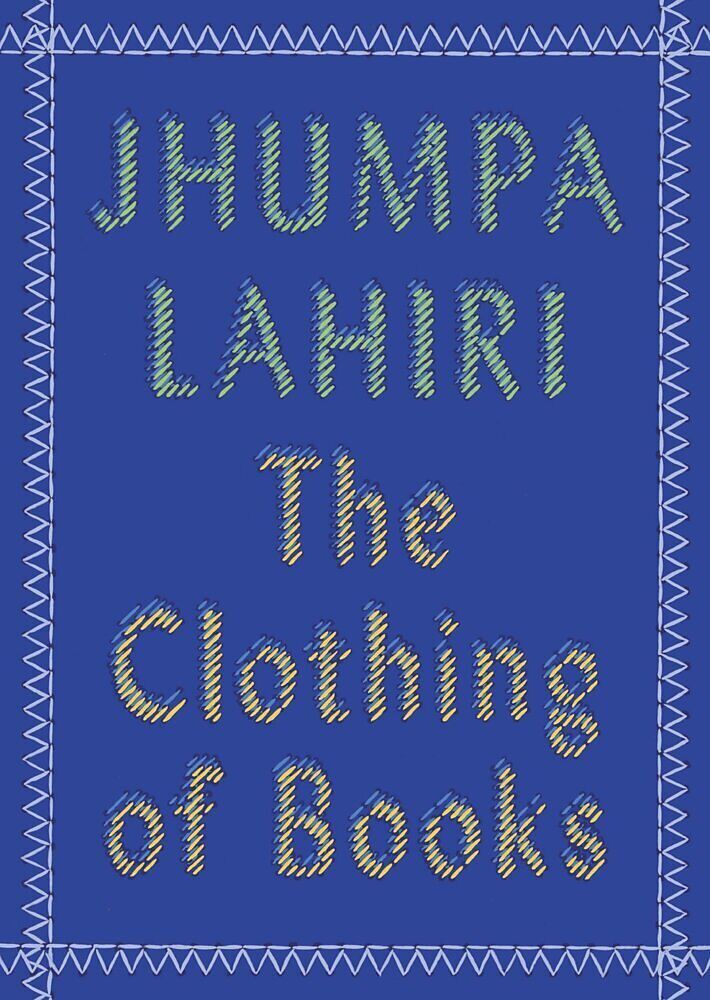The Clothing of Books
Einband:
Taschenbuch
EAN:
9780525432753
Untertitel:
An Essay
Genre:
Übrige Sachbücher & Sonstiges
Autor:
Jhumpa Lahiri
Herausgeber:
Random House UK
Anzahl Seiten:
74
Erscheinungsdatum:
15.11.2016
ISBN:
0525432752
Informationen zum Autor JHUMPA LAHIRI is the author of four works of fiction: Interpreter of Maladies , The Namesake , Unaccustomed Earth , and The Lowland ; and a work of nonfiction, In Other Words . She has received numerous awards, including the Pulitzer Prize; the PEN/Hemingway Award; the PEN/Malamud Award; the Frank O'Connor International Short Story Award; the Premio Gregor von Rezzori; the DSC Prize for South Asian Literature; a 2014 National Humanities Medal, awarded by President Barack Obama; and the Premio Internazionale Viareggio-Versilia, for In altre parole . Klappentext How do you clothe a book? In this deeply personal reflection, Pulitzer Prize-winning author Jhumpa Lahiri explores the art of the book jacket from the perspectives of both reader and writer. Probing the complex relationships between text and image, author and designer, and art and commerce, Lahiri delves into the role of the uniform; explains what book jackets and design have come to mean to her; and how, sometimes, "the covers become a part of me."1. The Charm of the Uniform In the house of my father's family in Calcutta, which I visited as a child, I would watch my cousins getting dressed in the mornings. They got themselves ready for school; I, on the other hand, was on vacation. They donned every morning, after bathing and before having breakfast, the same thing: a uniform. My cousins attended different schools and therefore their respective uniforms were also different. My male cousin wore navy blue cotton pants. My female cousin, a few years older, wore a sky-blue skirt. Apart from these two colors, and the yellow tie my male cousin had to knot around his collar, the rest of the uniform was identical: a white short-sleeved shirt, white socks, black shoes. In the closet there were surely two pairs of navy pants, two sky-blue skirts. It was enough to put on what was cleaned and pressed. In America, before leaving for India, my mother would buy several pairs of white socks, knowing that my aunt would be grateful for them. However simple and functional, I found my cousins' uniforms splendid, fascinating. On the street, on buses and trams, I was struck by this visual language, thanks to which one could identify and classify thousands of students in such a large and populous city. Every uniform represented belonging to one school or another. Each of my peers in Calcutta enjoyed, to my eyes, a strong identity and, at the same time, a sort of anonymity. This is the effect of the uniform. I would have liked a uniform myself. Whenever I would go to the seamstress to be fitted for new clothesa particular adventure I could experience only in India, where, in the 1970s, it was still common to wear handmade garments instead of buying one's clothing in storesI was tempted to ask for one. It was a foolish desire on my part. Apparel of this kind would have been of no use for me. In America I attended public school, where everyone wore what they wanted. And I was tormented by this choice, by this freedom. When I was a child, expressing myself through clothing was a source of anguish. I already felt different, conspicuous because of my name, my family, my appearance. In all other respects, I wanted to be just like everybody else. I dreamt of sameness, even invisibility. Instead, forced to find my own style, I felt badly dressed, the exception rather than the rule. It didn't help that some of my classmates, finding my clothes somewhat strange, used to tease me. They would say: What an ugly outfit. Those two things clash, didn't you know? No one wears bell-bottoms anymore, they're out of style. They laughed. That is why, for many years, while I waited for the school bus, my day began in a state of humiliation. My classmates derided me and, implicitly, also my parents. Being foreigners, they bought my clothe...
Autorentext
JHUMPA LAHIRI is the author of four works of fiction: Interpreter of Maladies, The Namesake, Unaccustomed Earth, and The Lowland; and a work of nonfiction, In Other Words. She has received numerous awards, including the Pulitzer Prize; the PEN/Hemingway Award; the PEN/Malamud Award; the Frank O’Connor International Short Story Award; the Premio Gregor von Rezzori; the DSC Prize for South Asian Literature; a 2014 National Humanities Medal, awarded by President Barack Obama; and the Premio Internazionale Viareggio-Versilia, for In altre parole.
Klappentext
How do you clothe a book?
In this deeply personal reflection, Pulitzer Prize-winning author Jhumpa Lahiri explores the art of the book jacket from the perspectives of both reader and writer. Probing the complex relationships between text and image, author and designer, and art and commerce, Lahiri delves into the role of the uniform; explains what book jackets and design have come to mean to her; and how, sometimes, "the covers become a part of me."
Zusammenfassung
A deeply personal reflection from the Pulitzer Prize–winning author of The Namesake that explores the art of the book jacket from the perspectives of both reader and writer.
How do you clothe a book? Probing the complex relationships between text and image, author and designer, and art and commerce, Lahiri delves into the role of the uniform; explains what book jackets and design have come to mean to her; and how, sometimes, “the covers become a part of me.”
Leseprobe
1.
The Charm of the Uniform
In the house of my father’s family in Calcutta, which I visited as a child, I would watch my cousins getting dressed in the mornings. They got themselves ready for school; I, on the other hand, was on vacation. They donned every morning, after bathing and before having breakfast, the same thing: a uniform.
My cousins attended different schools and therefore their respective uniforms were also different. My male cousin wore navy blue cotton pants. My female cousin, a few years older, wore a sky-blue skirt. Apart from these two colors, and the yellow tie my male cousin had to knot around his collar, the rest of the uniform was identical: a white short-sleeved shirt, white socks, black shoes.
In the closet there were surely two pairs of navy pants, two sky-blue skirts. It was enough to put on what was cleaned and pressed. In America, before leaving for India, my mother would buy several pairs of white socks, knowing that my aunt would be grateful for them.
However simple and functional, I found my cousins’ uniforms splendid, fascinating. On the street, on buses and trams, I was struck by this visual language, thanks to which one could identify and classify thousands of students in such a large and populous city. Every uniform represented belonging to one school or another. Each of my peers in Calcutta enjoyed, to my eyes, a strong identity and, at the same time, a sort of anonymity. This is the effect of the uniform.
I would have liked a uniform myself. Whenever I would go to the seamstress to be fitted for new clothes—a particular adventure I could experience only in India, where, in the 1970s, it was still common to wear handmade garments instead of buying one’s clothing in stores—I was tempted to ask for one. It was a foolish desire on my part. Apparel of this kind would have been of no use for me. In America I attended public school, where everyone wore what they wanted. And I was tormented by this choice, by this freedom.
When I was a child, expressing myself through clothing was a source of anguish. I already felt different, conspicuous because of my name, my family, my appearance. In all other respects, I wanted to be just like everybody else. I dreamt of sameness, even invisibility. Instead, forced to find my own style, I felt badly dressed, t…

Leider konnten wir für diesen Artikel keine Preise ermitteln ...
billigbuch.ch sucht jetzt für Sie die besten Angebote ...
Die aktuellen Verkaufspreise von 6 Onlineshops werden in Realtime abgefragt.
Sie können das gewünschte Produkt anschliessend direkt beim Anbieter Ihrer Wahl bestellen.
Loading...
Die aktuellen Verkaufspreise von 6 Onlineshops werden in Realtime abgefragt.
Sie können das gewünschte Produkt anschliessend direkt beim Anbieter Ihrer Wahl bestellen.
| # | Onlineshop | Preis CHF | Versand CHF | Total CHF | ||
|---|---|---|---|---|---|---|
| 1 | Seller | 0.00 | 0.00 | 0.00 |
